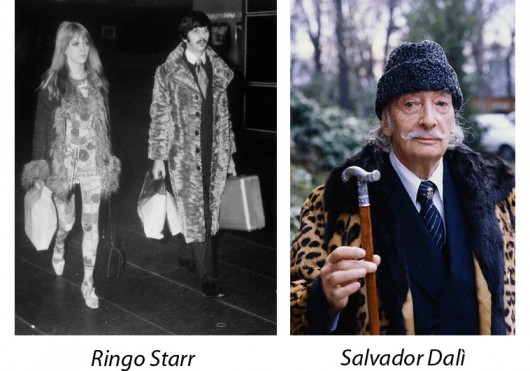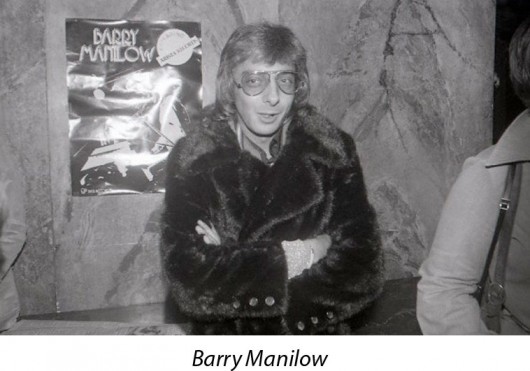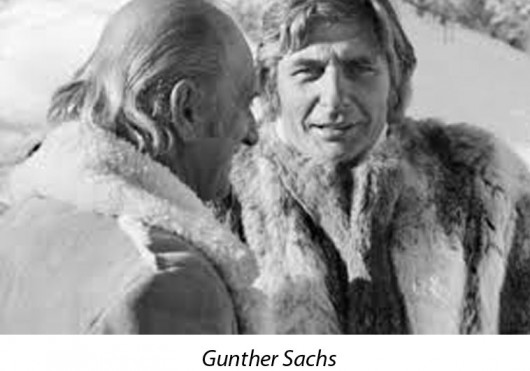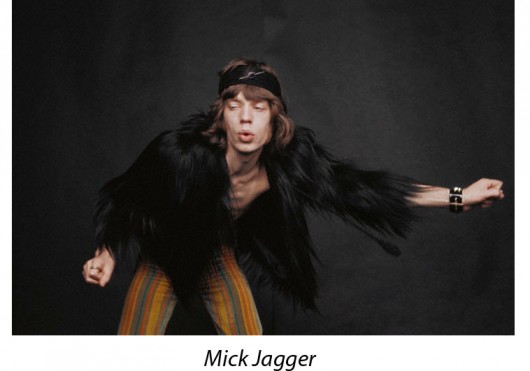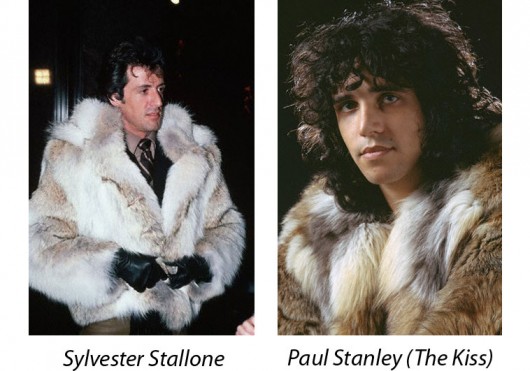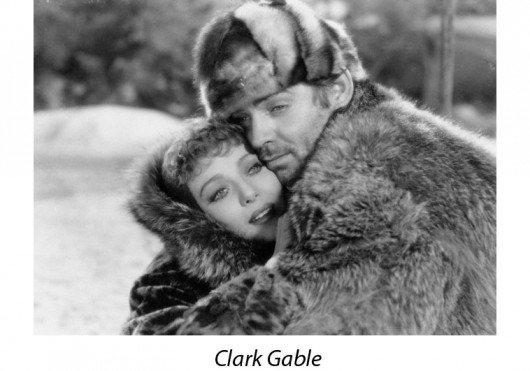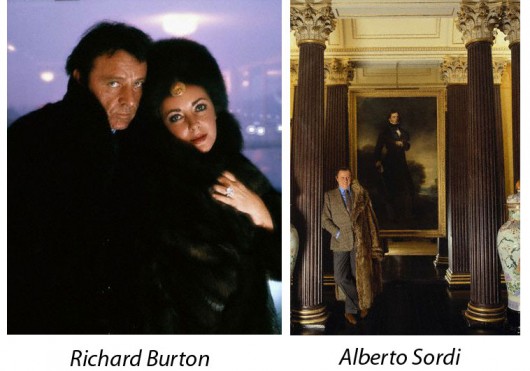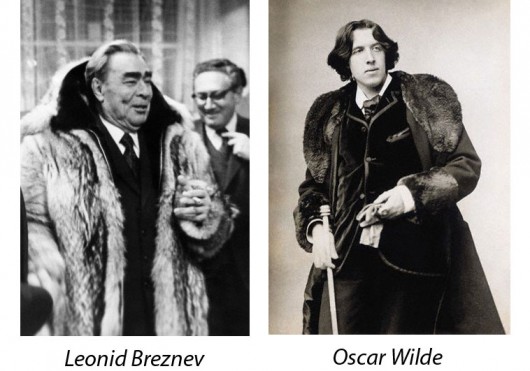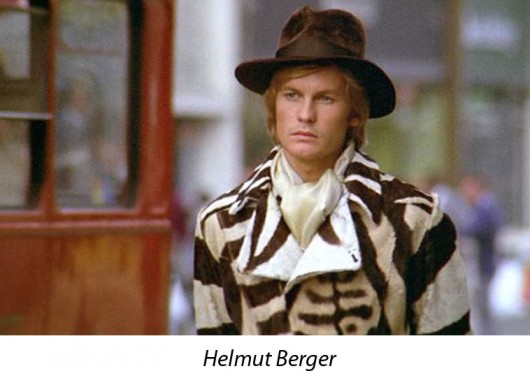VANITY FUR
Lasciamo da parte l’uso simbolico della pelliccia, aspetto che questa rubrica ha già trattato, come esternazione di ricchezza e di potere in saecula saeculorum. Accantoniamo anche le riflessioni sull’utilizzo funzionale – si potrebbe parlare di utilizzo… vikingo – di questo materiale, in grado riscaldare e proteggere dal gelo più di ogni altro, tant’è che in un passato più o meno remoto non vi era sostanziale distinzione tra i sessi nel ricorso alla pelliccia.
Focalizziamo invece la nostra attenzione sulla componente della vanità – propensione di cui i Signori uomini certo non difettano – e, perché no, sulle intenzioni trasgressive che portano il sesso forte ad indossare capi in toto o in parte in pelliccia. Molto spesso vanità e trasgressione si sommano l’una all’altra.
Questo dato è un po’ il caposaldo dell’epopea dandy. Un dato che dunque non ci porta affatto a stupirci nel vedere gentlemen di.tutti i tempi – con Oscar Wilde immancabilmente a fare da apripista – ritratti in sontuosi cappotti di pelliccia. Stiamo parlando sia di dandy “di professione” che di dandy “per vocazione”, come Gunter Sachs, ufficialmente playboy, soprattutto quando si ritrova calato nel ruolo di fidanzato di Brigitte Bardot, la quale si scopre animalista radicale diversi decenni più tardi.
Oppure Helmut Berger, che non indossa pellicce da capogiro solo per interpretare il Ludwig viscontiano: lo fa anche a piacimento suo, memore forse del gelo alpino della sua Kitzbühel, con un intento provocatorio che certo non è solo una prerogativa solo sua.
Non si contano infatti le “wearing fur” rockstar né tantomeno gli attori: da Ringo Starr, forse il più trasgressivo tra i quattro di Liverpool a Paul McCartney, Mick Jagger, Barry Manilow, Paul Stanley dei Kiss.
E ancora: da Clark Gable a Rock Hudson, a Sylvester Stallone, questi ultimi icone indiscusse, quantomeno sul set, della virilità hollywoodiana, che in verità indossano pellicce forse più per esigenze di copione, non di rado con effetti esilaranti, giocando con notevole talento sul filo sottile che separa ed insieme raccorda mascolinità e femminilità.
Vale per Richard Burton, nato povero, figlio di un minatore gallese, che non esita a farsi ritrarre indossando un “fur coat” non tanto dissimile da quello portato dalla donna della sua vita, la sublime Elizabeth Taylor, autentica “Venere in pelliccia”. Ci “cascano” anche gli attori europei, autentici miti nelle rispettive nazioni, da Alberto Sordi a Fernandel.
E, sfoggiando pellicce su pellicce, si arriva sino alla stravaganza che identifica alcuni personaggi prima ancora della loro notorietà o del loro talento artistico E’ sufficiente pensare a Salvador Dalì o a Liberace, che in fatto di “fur glamour” non era certo secondo – né intendeva esserlo – a nessuna diva della Mecca del cinema.
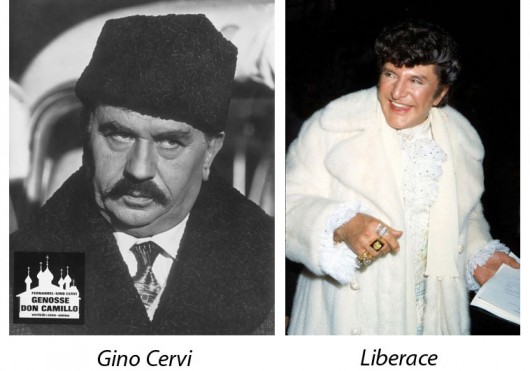 Il primo pratica in verità un’eccentricità pari all’unicità della sua arte, tanto da sdoganare la sua figura ed il suo “stile di vita” anche agli occhi dell’oscurantismo franchista con cui peraltro l’artista non esita affatto a scendere a patti. Il secondo è il protagonista di un modo di porsi al pubblico – con l’immancabile contorno di pianoforti a coda candidi, candelabri, tendaggi di (finto) broccato – ben addomesticato, che incanta anche le casalinghe del Mid West.
Il primo pratica in verità un’eccentricità pari all’unicità della sua arte, tanto da sdoganare la sua figura ed il suo “stile di vita” anche agli occhi dell’oscurantismo franchista con cui peraltro l’artista non esita affatto a scendere a patti. Il secondo è il protagonista di un modo di porsi al pubblico – con l’immancabile contorno di pianoforti a coda candidi, candelabri, tendaggi di (finto) broccato – ben addomesticato, che incanta anche le casalinghe del Mid West.
In altri casi invece, nella scelta della pelliccia al maschile potere, vanità ed ego ipertrotrofico si sommano, con risultati che lasciano quantomeno perplessi e toccano le figure di leader dell’establishment più consolidato ed immobilista, anche se progressisti e rivoluzionari per auto-proclamazione: dal Maresciallo Tito a Breznev.
Ed è impareggiabile la parodia che di queste figure dà lo straordinario Gino Cervi nel ruolo di Peppone, in visita a Mosca, cuore del “paradiso socialista”. In sintesi: se esiste “Venere in pelliccia” – ed esiste, non vi sono dubbi –, esiste anche… “Marte in pelliccia”. Eccome! Giorgio Re
Let’s give up the symbolic use of fur, that this column has already debated, as an expression of wealth and power in saecula saeculorum. Let’s set aside the considerations about the functional use – we can talk about… viking use – of this fabric, able to warm and protect from freeze more than every other, so that in the past there wasn’t a significant difference between sexes in wearing furs. Let’s focus instead on the vanity part – in which men don’t lack – and, why not, on the transgressive intentions that lead the strong sex to wear garments made of fur. Very often vanity and transgression add one to each other. This is the cornerstone of the dandy epic. We’re talking about dandies “as a profession” and dandies “as a vocation”, like Gunter Sachs, officially playboy, especially when he finds himself in the role of the boyfriend of Brigitte Bardot, who became a radical animal activist several decades later. Or Helmut Berger, that doesn’t wear staggering furs only for the role of the viscontean Ludwig; he does it also to his liking, maybe mindful of the alpine cold of his Kitzbühel, with a provocative aim that’s not his prerogative. Countless, indeed, are the “wearing fur” rockstars and actors: from Ringo Starr, maybe the most transgressive among the Four from Liverpool, to Paul McCartney, Mick Jagger, Barry Manilow, Paul Stanley of the Kiss. And then: from Clark Gable to Rock Hudson and Sylvester Stallone, undisputed icons, at least on stage, of Hollywood virility, that actually wear furs for script needs, sometimes with funny effects, playing with great talent on the vague line between masculinity and femininity. The same for Richard Burton, born poor, son of a Welsh miner, that has him portrayed wearing a “fur coat” not so different from that worn by the woman of his life, the sublime Elizabeth Taylor, a real “Venus in furs”. Even the european actors, real idols In their countries, were taken in, from Alberto Sordi to Fernandel. And, wearing furs and furs, we talk about the extravaganza that identifies some personalities more than their fame or their artistic talent. Let’s think about Salvador Dalì or Liberace, that in terms of “fur glamour” was equal to the divas of the movies. The first one actually lived in a mood of eccentricity equal to his art’s uniqueness, that legitimized his figure and his lifestyle with Franco’s obscurantism: The second one was the protagonist of a way of staging – with the inevitabile surrounding of white pianos, candle holders, curtains made of (faux) brocade – that enchanted even the Mid West housewives. In other cases instead, the fur represents the sum of power, vanity and hypertrophic ego, with results that make us confused and concern the leaders of the most strenghtened establishment, even if progressive and revolutionary for self-proclamation: from Tito to Breznev. The parody of these personalities made by the extraordinary Gino Cervi in the role of Peppone is incomparable. To sum up: if the “Venus in furs” exists – and she exists, without doubts -, also exists…”Mars in furs”. Giorgio Re





